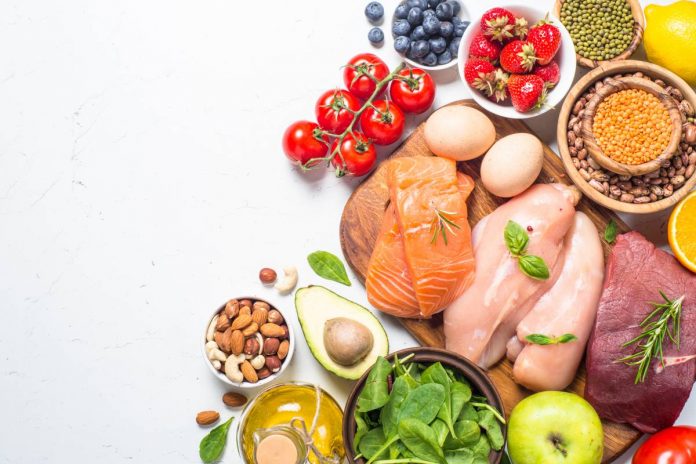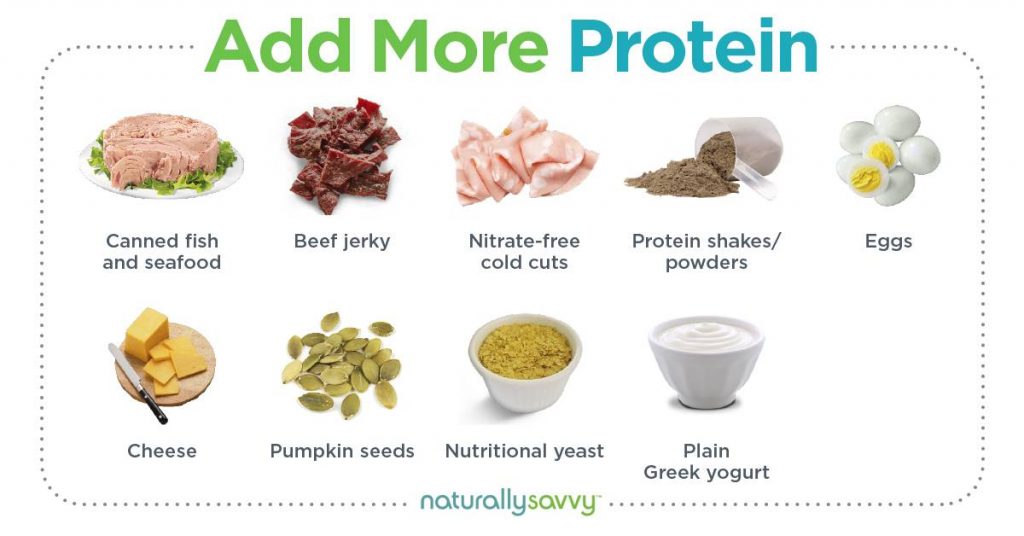
When the topics of weight loss, fat burning, and boosting metabolism come up, a great deal of the discussion usually includes counting calories. In fact, there are lots of apps that can help you count them, seemingly making your weight loss efforts easier. What if you were to count nutritional macros instead? What would happen then?
What are nutritional macros?
Nutritional macros (macronutrients) are the three primary categories of nutrients you get from the food you eat: protein, carbohydrates, and fats. Each macro provides a specific amount of calories:
- 1 gram of fat provides 9 calories
- 1 gram of carbohydrates provides 4 calories
- 1 gram of protein provides 4 calories
If you want to lose weight, one of the things you can do is count calories or macros, but if you count the latter, you will have important nutritional information that will not only allow you to lose weight, but improve your body composition, metabolic health, energy level, and overall health as well. That is, counting macros gives you a more complete and holistic look at your nutritional intake.
Read about metabolic health—what you need to know
Each food choice you make contains different levels of macros, and each macro provides your body with different benefits. When you focus on nutritional macros you know where you are getting your calories from and the impact they can have on your health.
How many grams of each nutritional macro should you be consuming every day? This varies for every individual, depending on your health status, personal goals, and other factors, like activity levels. However, the National Academies of Science, Engineering, and Medicine provides the following recommendations for adults:
- 10-35 percent of calories from protein
- 20 to 35 percent from fats
- 45 to 65 percent from carbohydrates
You can calculate your nutritional macro needs using a series of steps that does involve some math skills! You can also use a specialized device that personalizes your dietary goals by identifying your macro needs on a daily basis based on your metabolic flexibility. A Lumen can be used for this. Right now, you can get your own Lumen with a $50 discount with the code ANDREANS.
Nutritional macros and calories
When you count macros, you are paying attention to the quality of your food rather than the quantity. It helps you focus on reaching your weight, fitness, and overall health goals by noting the type of calories you are consuming rather than just the number.
For example, say you have a daily calorie goal of 1,800 calories. What is the optimal way to achieve that goal while also providing your body with the level of nutrition it needs to function at its best? A medium doughnut will put a 250-calorie dent in your daily goal, but what about nutritional value? It provides 14 grams of fat, 3.7 grams of protein, and 29 grams of carbohydrates, and very few micronutrients like vitamins and minerals.
Compare this with two cups of lentil soup (278 calories), which contains 5.6 grams of fat, 18.6 grams of protein, and 40 grams of carbs. These two food choices have about the same number of calories, yet the nutritional values are miles apart, and your body will know the difference!
The doughnut, for example, contains saturated fat, 14 grams of sugar (a fast-absorbing carb) as part of the carbohydrate total, and poor levels of vitamins and minerals. The sugar will elevate your blood glucose levels, causing your body to make more insulin, which in turn interferes with your body’s ability to burn fat until sugar levels return to normal.
The lentil soup has complex carbohydrates (slow-absorbing carbs), which don’t cause spiking sugar levels and metabolize slower. Although protein and carbs have the same amount of calories per gram, protein is more difficult to digest and so burns more calories in the process. Protein is also critical for supporting and promoting muscle function and mass.
Carb counting
For those who love carbs—and that’s a lot of people!—getting the most nutritional value and satisfaction from your carbohydrate faves can be a challenge unless you know how to make some wise swaps. The goal is to focus on unrefined, slow-absorbed carbs rather than processed, fast-absorbed ones. If you are ready to reduce calories and carbs while boosting your nutritional intake, check out these tasty carb swaps.
- Hemp milk or coconut milk vs dairy milk: 0 gr (plus a bonus of omega-3 fatty acids) or 2 gr vs 12 gr per cup
- Cauliflower rice for white rice: 7 gr vs 22 gr per ½ cup
- Lettuce leaf wrap vs bread slice: 1 gr vs 12 gr (approximate)
- Zucchini spirals vs linguine: 4 gr vs 35 gr (bonus: zucchini is gluten-free!)
- Plain yogurt vs fruit-flavored yogurt: 13 gr vs 47 gr per cup
- Cucumber slices vs traditional crackers: <2 gr vs 16 gr per ½ cup
- Mashed cauliflower vs mashed potatoes: 10 gr vs 32 gr per ¾ cup
- Flavored water (seltzer water or still) vs soda or juice: 0 gr vs 49 gr (approx.) per 17 oz
- Zucchini chips vs potato chips: 1.8 gr vs 29 gr per cup
Protein power
Getting enough quality protein into your diet can be challenging, especially if you don’t have much time to prepare meals, clean/organic meat and dairy foods are difficult to find or too costly, or you need more creative ways to get protein into your diet. But improving your protein intake is important.
Read about protein and a healthy diet
For example, eating protein first in a meal boosts the production of a hormone that makes you feel satisfied faster, which curbs your appetite. Eating more protein raises your metabolism after eating, and while you sleep, so you can lose while you snooze! Protein also regulates your glucose and insulin levels, so they don’t spike after eating.
Here are some great protein sources (including vegan protein options) and ideas on how to include more in your menu. Choose foods that are organic, GMO-free, and all-natural whenever possible.
- Canned fish/seafood: Tuna, salmon, mackerel, and more are ready to use right from the can. Add to green salads, stir into soups, or mix in dips to boost protein content.
- Beef jerky: Keep in your desk, purse, or knapsack for easy, high-protein snacking. And yes, there is vegan jerky on the market!
- Nitrate-free cold cuts: Wrap in lettuce leaves to make a quick snack, chop up and add to green salads, or add to scrambled eggs. Vegan cold cuts are now readily available in many supermarkets.
- Protein powders/shakes: These are available in dairy and non-dairy (pea, flaxseed, chia seed, pumpkin seed, quinoa) and are quick and easy to prepare, with or without a blender. Do you want to really boost your protein power? Then mix these powders with one or two other items on this list—plain Greek yogurt and/or pumpkin seeds. Protein powders are a natural addition to your favorite smoothie recipes as well.
- Eggs: If you don’t want to take the time to prepare eggs on multiple days, make a dozen hard-boiled eggs and keep them in the frig. They are quick high-protein snacks and can be sliced and added to salads, sandwiches, and chili.
- Cheese: Both dairy and vegan cheese are good alone as a simple snack but really shine when combined with apple or pear slices, tomato slices, whole grain crackers, or melted over cauliflower or broccoli.
- Pumpkin seeds: High in zinc as well as protein, you can enjoy pumpkin seeds alone, mixed with nuts and other seeds, as a salad or vegetable dish topping, or stirred into soups and smoothies.
- Nutritional yeast: The cheesy taste of nutritional yeast makes it a good choice for boosting the flavor of baked potatoes, popcorn, cooked veggies, sauces, soups, and salads.
- Plain Greek yogurt: With twice the protein as traditional yogurt, you can enjoy the plain Greek variety with a handful of fresh berries, added to a smoothie (with your protein powder!), and as a substitute for sour cream in recipes. It’s also a great dip for raw veggies.
- Ancient grains: Quinoa, amaranth, buckwheat, and farro are all good sources of protein and can be added to soups, stews, and casseroles. Looking for a new breakfast treat? Try one of these cooked grains topped with berries.
- Garbanzo beans: Have you ever snacked on garlic roasted garbanzo beans? These protein-, fiber-, and iron-rich beans are also the basis for hummus, falafel, and chickpea powder.

Bottom line
Shifting your focus from counting calories to nutritional macros is a step toward reaching your weight goals in a way that focuses on quality instead of quantity and optimizing your overall health and well-being.
[Author's Note: I have been using a Lumen since January, and with in-app food logging, it is easy to make sure I am following my macro requirements. I have found I have fewer cravings by making sure I am getting enough fat and protein each day. I have also learned which carbs to swap for more energy. My Lumen score is slowly rising, and I am excited to see myself become more metabolically flexible. Learn more about Lumen and enter the code ANDREANS to get $50 off your own at Lumen.me.]
Note: This post contains affiliate links.










